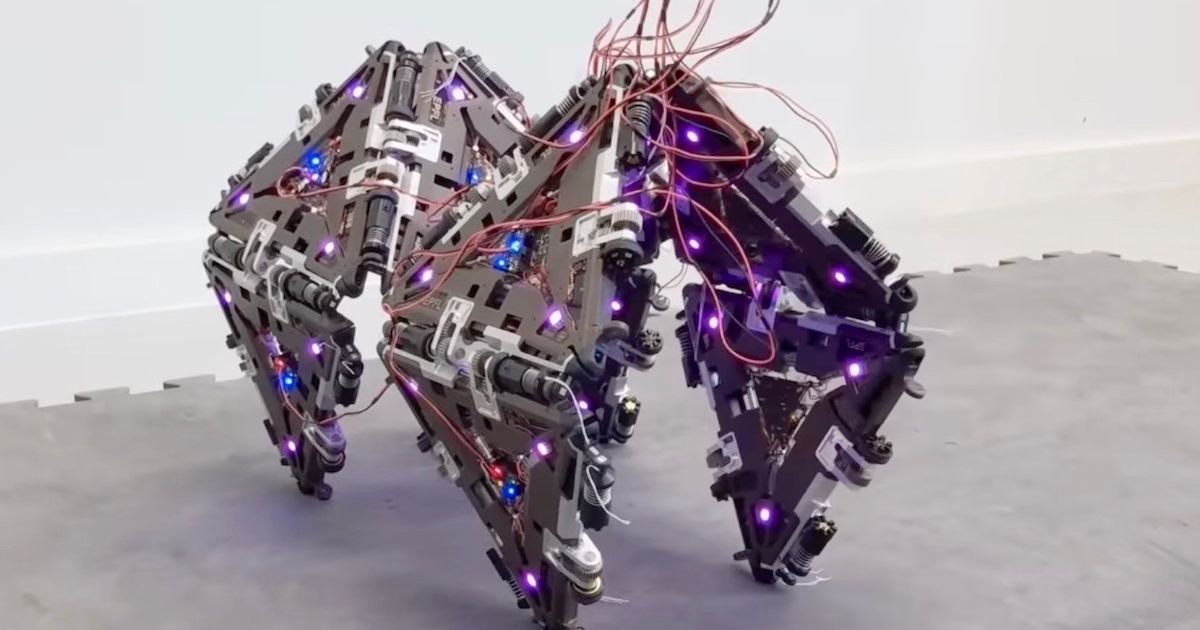
NASA is focusing increasingly on interplanetary missions to faraway places like Mars, and such highly ambitious voyages will require robotic equipment to assist astronauts with a range of tasks.
With that in mind, a team of researchers at the Ecole Polytechnique Fédérale de Lausanne (EPFL) in Switzerland is developing a remarkable robot called Mori3 that’s capable of changing its size, shape, and function, morphing from 2D triangles into almost any 3D object. You can see it in action in the video at the top of this page.
“Our aim with Mori3 is to create a modular, origami-like robot that can be assembled and disassembled at will depending on the environment and task at hand,” said Jamie Paik, director of the Reconfigurable Robotics Lab, and co-author of a recently published study detailing the project.
As Paik suggests, Mori3 would be well suited to space missions as it can be configured into a number of shapes according to the specific task. Although the team envisions it being used for things like external repairs and communications, it could be configured for entirely new tasks as they become apparent. Importantly, it cal also be stored flat, saving precious space on a long-duration crewed mission.
Paik acknowledges that a “general-purpose robot like Mori3 will be less effective than specialized robots in certain areas,” but adds that “Mori3’s biggest selling point is its versatility.”
Polygon meshing
Mori3’s triangular modules join together to create polygons of different sizes and configurations in a process called polygon meshing.
“We have shown that polygon meshing is a viable robotic strategy,” said team member Christoph Belke, though he added that to make it happen the team had to “rethink the way we understand robotics.”
Many space robots are currently a little clunky or limited in what they can do. The space station’s CIMON, for example, was basically a floating display that provided astronauts with information for various jobs, while the Astrobee continues to perform routine tasks involving navigation, crew monitoring, and logistics management. Robonaut also deserves a mention for being the first humanoid robot in space, but it’s still some way from being genuinely useful.
NASA is eyeing the late 2030s for the first human mission to Mars and so there’s a good chance that the crew will be traveling alongside a number of robots, a more advanced version of Mori3 possibly among them.
Editors’ Recommendations
Services Marketplace – Listings, Bookings & Reviews
